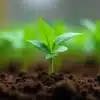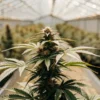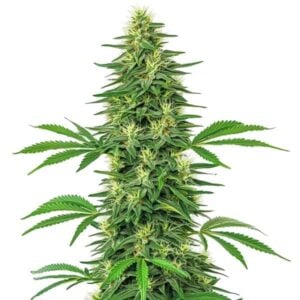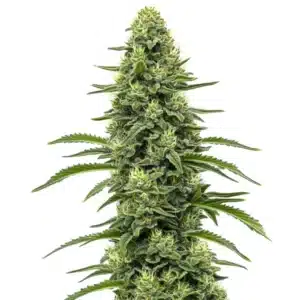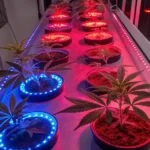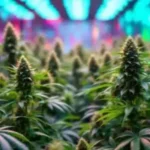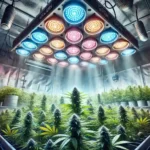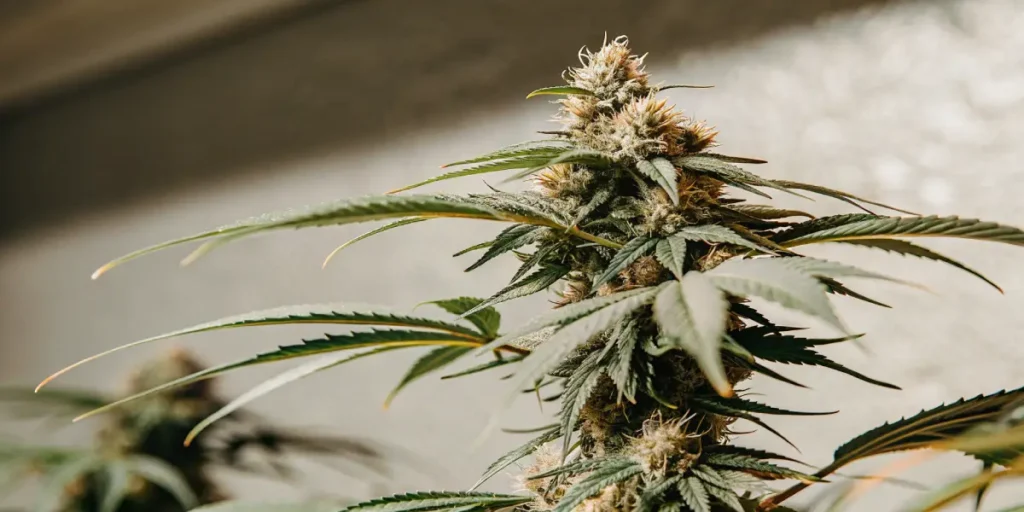
Far-Red Light and Flower Induction in Cannabis
Light plays a crucial role in the life cycle of cannabis plants. Far-red light is a part of the spectrum that is not visible to the human eye, but it significantly impacts how cannabis plants grow and flower. In fact, research on Far-Red Light and Flower Induction in Cannabis shows that this specific wavelength can trigger earlier and more uniform blooming. When you incorporate far-red light into your growing setup, you can influence both the timing and quality of your cannabis flowering.
Far-red light has a wavelength between 700nm and 800nm. It’s essential for growers to understand how far-red light affects cannabis flowering. By optimizing the far-red light for cannabis yield, you can enjoy better harvests. This light spectrum benefits both novice and experienced growers looking to improve their cultivation techniques.
Recommended Strains
Grape Ape
|
|
THC | 15% - 25% (Medium) |
|
|
Type | Feminized |
|
|
Yield | High |
|
|
Phenotype | 90% Indica / 10% Sativa |
Blue Dream
|
|
THC | 17% - 24% (Medium) |
|
|
Type | Feminized |
|
|
Yield | High |
|
|
Phenotype | 50% Indica / 50% Sativa |
Utilizing far-red light in your grow room can dramatically alter the way your cannabis plants transition from the vegetative stage to flowering. The far-red light and cannabis growth stages are tightly linked, offering you a tool to control and enhance your plant’s productivity.
Far-Red Light Effects on Cannabis Flowering
Far-red light influences the plant’s phytochrome system, which is responsible for detecting light changes. This system helps the plant decide when to switch from growing leaves to producing flowers. By using far-red light, growers can effectively manipulate this system to induce flowering at the desired time. Knowing the function of Far-Red Light and Flower Induction in Cannabis is key for cultivators who want to optimize growth cycles and achieve higher yields with precise control.
For example, when you expose your plants to far-red light at specific times, you can shorten the night period that the plant perceives. This trick, known as “night interruption,” encourages quicker transitions into the flowering phase. This method is particularly useful for strains like Grape Ape from Blimburn Seeds, which require precise control for optimal flowering.
The far-red light effects on cannabis flowering are not only limited to timing but also extend to the overall health of the plant. By fine-tuning the light exposure, growers can ensure that their plants are receiving the necessary signals to thrive. This can lead to stronger plants that are more resilient to environmental stressors.
Furthermore, far-red light can be crucial in managing pest and disease pressures. Healthier plants that transition smoothly into the flowering stage can be less susceptible to common issues such as mold or insect infestations. This is an essential consideration for growers aiming for high-quality, pest-free harvests.
Promos & Deals
Cannabis Far-Red Light Spectrum Benefits
The benefits of utilizing the far-red light spectrum in your grow room extend beyond just flowering induction. This spectrum can enhance leaf size and the overall vigor of your plants. It’s an effective way to enhance not just yield but also the quality of your harvest.
Growers often report that cannabis plants exposed to far-red light produce denser buds. This is because the light encourages better nutrient uptake and more efficient energy conversion. Strains like Blue Dream can significantly benefit from these effects, resulting in a more luscious harvest.
The cannabis far-red light spectrum benefits also include improved root development. Stronger roots mean better access to water and nutrients, which in turn supports the plant’s overall growth and productivity. This can be particularly advantageous in hydroponic systems where nutrient uptake is critical.
Additionally, using the far-red light spectrum can lead to a more uniform canopy. This uniformity ensures that all parts of the plant receive adequate light, promoting consistent growth and development. This is particularly beneficial in commercial settings where maximizing every inch of growing space is essential. Recent studies on Far-Red Light and Flower Induction in Cannabis also show that this spectrum can accelerate flowering responses, helping growers optimize cycles and increase overall yield.
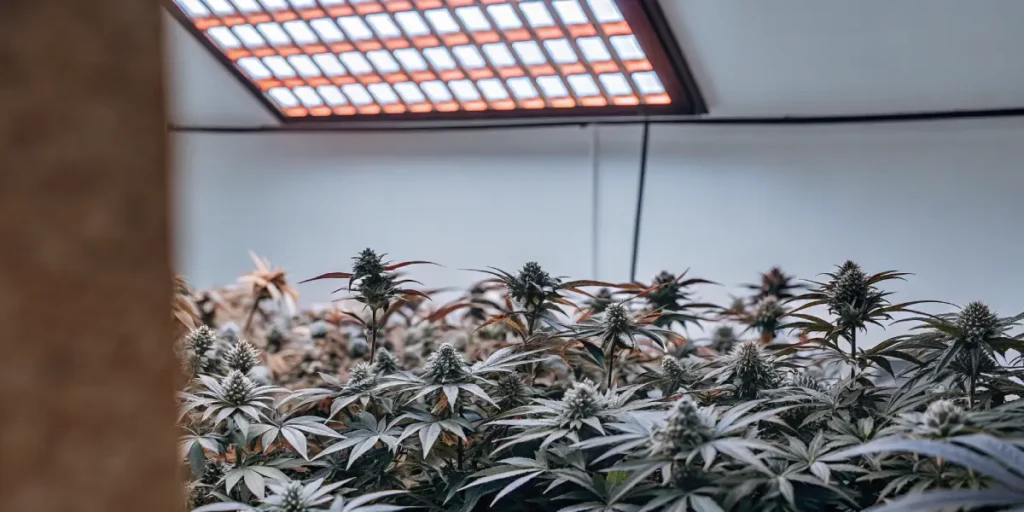
How Far-Red Light Induces Cannabis Flowering
The interaction between far-red light and phytochrome systems is complex but can be simplified. Phytochromes are proteins that sense light conditions. They exist in two forms: active and inactive. Far-red light converts phytochromes to their active form, signaling the plant to start flowering.
For practical application, growers should introduce far-red light just after the lights off period. This can simulate sunset, helping to mimic natural growth conditions. This method is particularly effective for indoor setups where natural light conditions are replicated.
Knowing how Far-Red Light and Flower Induction in Cannabis work can transform a grower’s approach to lighting. By leveraging this knowledge, cultivators can time their crops to achieve peak flowering windows, optimizing both yield and quality. This strategic approach can be the difference between an average and a bumper harvest.
Moreover, incorporating far-red light as part of a full-spectrum lighting plan can enhance the plant’s metabolic processes. This leads to not only faster flowering but also superior aroma and flavor profiles, making the final product more appealing to consumers.
Optimizing Far-Red Light for Cannabis Yield
To get the most out of your cannabis plants, optimizing far-red light is essential. This involves not just incorporating far-red light but also balancing it with other parts of the light spectrum. Too much far-red light can stretch your plants excessively, so it’s crucial to find the right balance.
Consider using LED lights that offer a full spectrum, including far-red light. This setup allows for more precise control over your plant’s growth conditions. A balanced spectrum ensures that your plants receive the right amount of each type of light at every growth stage.
Optimizing far-red light for cannabis yield also requires knowing the specific needs of different strains. Some strains may require more intense far-red exposure, while others may thrive with less. Tailoring your lighting strategy to the unique characteristics of each strain can lead to more successful outcomes.
Besides to adjusting light intensity, growers should also consider the duration and timing of far-red light exposure. By experimenting with different schedules, growers can fine-tune their setups to achieve the best possible results, maximizing both yield and quality.
Far-Red Light and Cannabis Growth Stages
The cannabis growth cycle can be broken down into several stages, each with unique light requirements. Far-Red Light and Flower Induction in Cannabis are closely linked, as this spectrum plays a different role in each stage, offering various benefits. During the vegetative stage, it can enhance the growth of leaves and stems, while in flowering it helps trigger bud development and improve yields.
As your plants transition into flowering, far-red light becomes crucial. It signals the plant to start producing flowers, speeding up the transition. This is particularly important for growers looking to maximize their yield in a shorter time frame.
Far-red light and cannabis growth stages are intricately connected, with each stage benefiting from specific light adjustments. During the early stages, far-red light can help establish a strong foundation by promoting robust vegetative growth, setting the stage for later success.
In the flowering stage, maintaining the right balance of far-red light can ensure that the plant focuses its energy on producing high-quality buds. This can result in a more visually appealing and potent final product, delighting both growers and consumers alike.

FAQs
What is the best time to apply far-red light?
The best time to apply far-red light is during the transition from the vegetative stage to the flowering stage. Applying it just before the dark period can help simulate a sunset, encouraging the plant to begin flowering more quickly. This method can also be used as a night interruption to manipulate the plant’s perception of day length.
Using this strategy can be particularly effective with certain strains that have longer flowering times. By optimizing far-red light use, you can reduce the time required for your plants to mature, leading to faster harvests and potentially more cycles per year.
Timing is crucial when applying far-red light, as it directly influences the plant’s transition phases. Strains that are sensitive to light changes can benefit immensely from a well-timed introduction of far-red light, ensuring they flower at the optimal time.
Moreover, knowing the best time to apply far-red light can minimize potential stress on the plants, leading to healthier growth and more predictable flowering outcomes. This precision is key to achieving consistent high-quality yields.
How does far-red light affect cannabis yield?
Far-red light can significantly enhance cannabis yields when used correctly. It encourages more robust flowering, leading to denser buds and higher resin production. This is due to the improved nutrient uptake and energy conversion efficiency that far-red light promotes.
However, it’s important to balance far-red light with other spectrums to prevent excessive stretching, which can be counterproductive. By maintaining this balance, growers can optimize their yields and produce high-quality cannabis.
The impact of far-red light on cannabis yield extends beyond just the quantity. Properly managed, it can also improve the quality of the harvest, resulting in buds with higher cannabinoid and terpene profiles, which are desirable traits for both recreational and medicinal users.
Additionally, knowing how far-red light affects cannabis yield can inform better cultivation practices. By adopting a holistic approach that considers all aspects of plant growth, growers can achieve superior results, maximizing both their investment and efforts.
Can far-red light be used in outdoor grows?
Yes, far-red light can be used in outdoor grows, though it is more challenging to control. Outdoor growers can use supplemental far-red light during critical growth phases to enhance flowering. This is particularly useful in areas with shorter growing seasons.
Supplemental far-red light can extend the perceived day length, allowing outdoor plants to reach full maturity more quickly. This technique can help outdoor growers match the results of indoor setups more closely.
Incorporating far-red light into outdoor grows can be a game-changer for growers operating in regions with unpredictable weather conditions. By providing additional light during key growth phases, growers can mitigate some of the risks associated with outdoor cultivation.
Moreover, using far-red light in outdoor settings can help synchronize flowering times across large plots, facilitating more efficient harvests. This synchronization can also reduce labor costs and streamline post-harvest processing.
Is far-red light necessary for all cannabis strains?
While not absolutely necessary, far-red light can benefit most cannabis strains. Some strains respond more dramatically to far-red light, resulting in quicker flowering and larger yields. It is particularly useful for strains bred for indoor cultivation, where light conditions are entirely controlled.
For strains known for their long flowering periods, incorporating far-red light can help reduce the time to harvest. Even strains that traditionally grow well under natural sunlight can see improvements in growth speed and yield when far-red light is used thoughtfully.
Evaluating whether far-red light is necessary for a particular strain involves knowing its genetic background and growth characteristics. Strains that are naturally inclined to longer flowering periods may see the most benefit from supplemental far-red light.
Additionally, growers should consider the end goals of their cultivation efforts. For those prioritizing speed to market or specific plant traits, far-red light can be an invaluable tool in achieving those objectives efficiently.
How does far-red light interact with other light spectrums?
Far-red light interacts with other spectrums by influencing the plant’s overall growth response. While far-red light promotes flowering, blue and red lights are essential for vegetative growth and bud development. A balanced spectrum ensures optimal plant health and yield.
Growers should aim to provide a full spectrum of light that includes far-red alongside blue, red, and white light. This balanced approach supports all growth stages and maximizes the benefits of each spectrum, leading to healthier plants and better harvests.
The interplay between far-red light and other spectrums is a dynamic process that requires careful management. By adjusting the ratios of different light types, growers can fine-tune their lighting systems to cater to the specific needs of their plants at each growth stage.
Furthermore, knowing how far-red light interacts with other spectrums can help prevent potential growth issues such as photoinhibition or light stress. By achieving a harmonious balance, growers can create an optimal environment for their cannabis plants to flourish.








